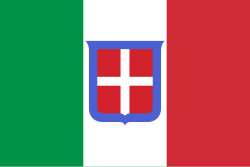| Italy at the 1924 Winter Olympics | |
|---|---|
 | |
| IOC code | ITA |
| NOC | Italian National Olympic Committee |
| Website | www |
| in Chamonix | |
| Competitors | 23 (men) in 4 sports |
| Flag bearer | Leonardo Bonzi [1] |
| Medals |
|
| Winter Olympics appearances (overview) | |

Italy competed at the 1924 Winter Olympics in Chamonix, France.